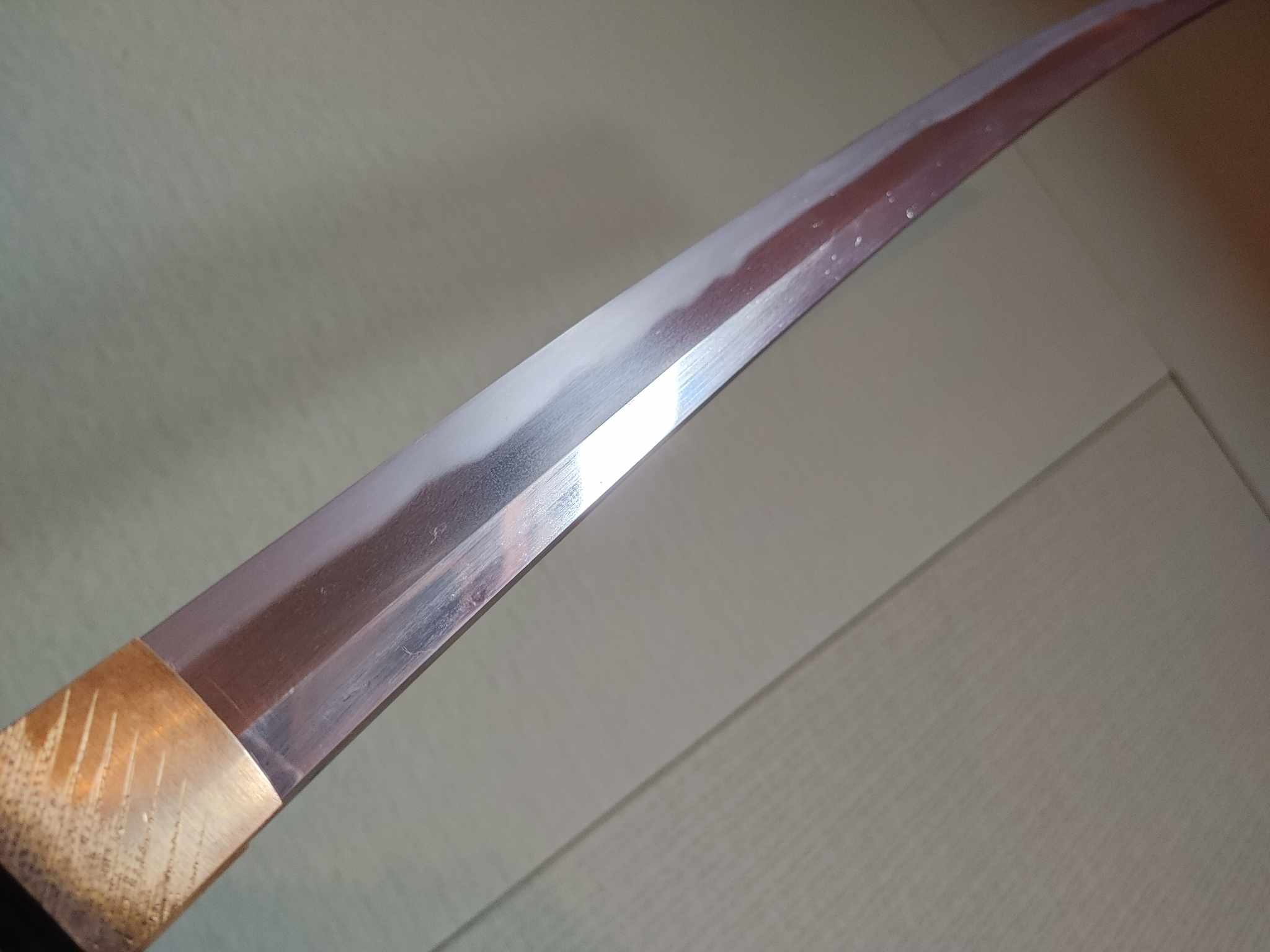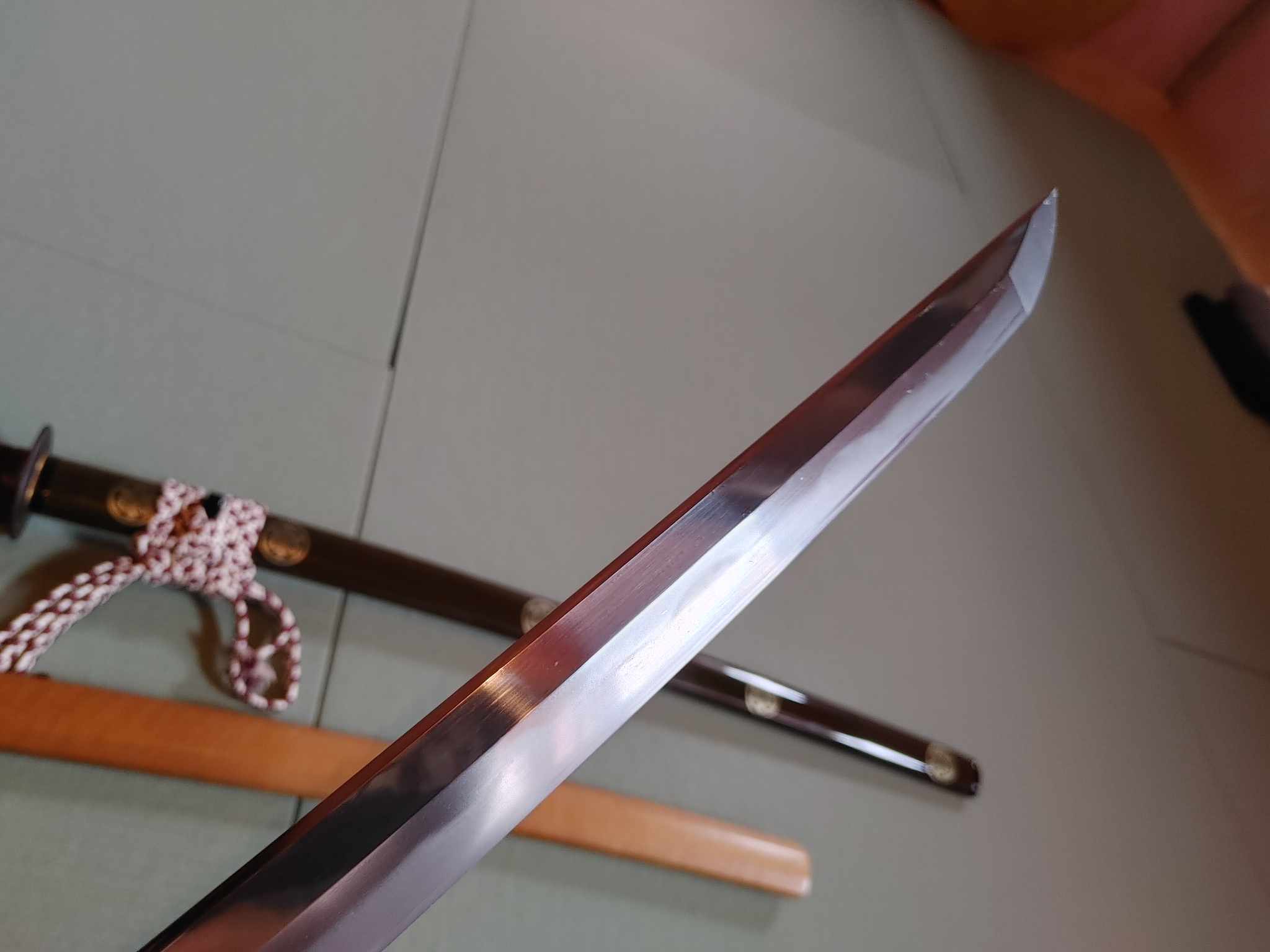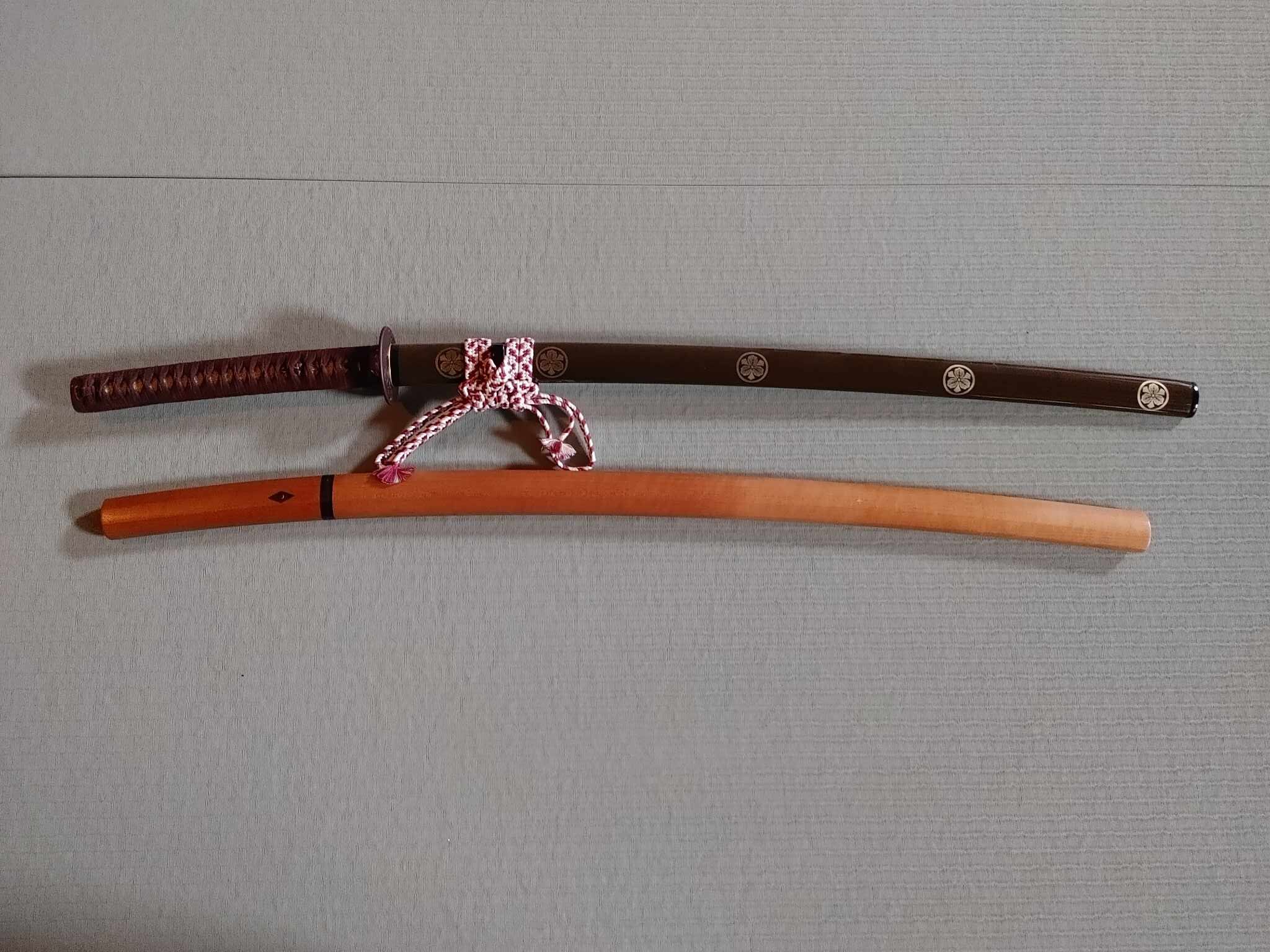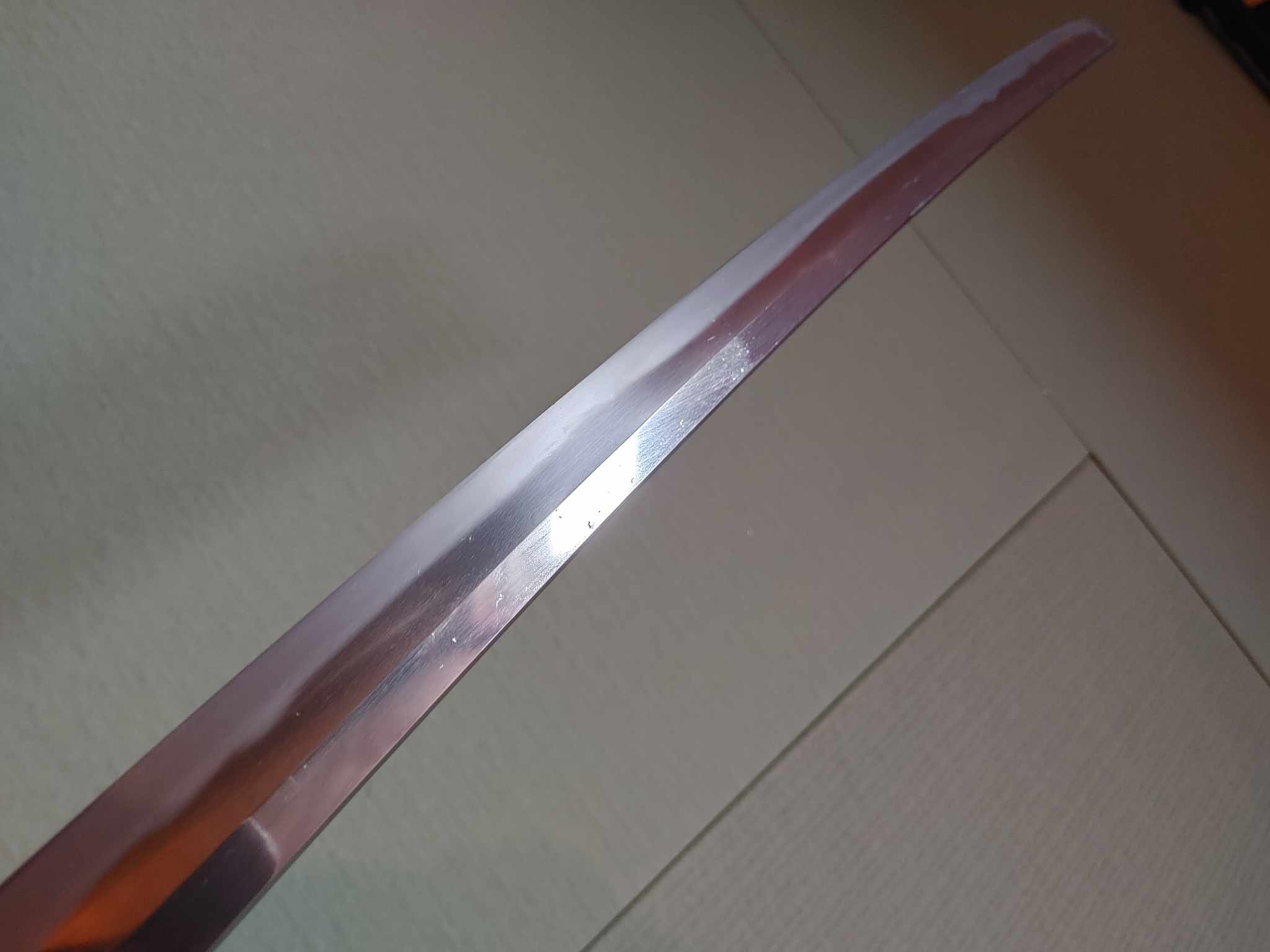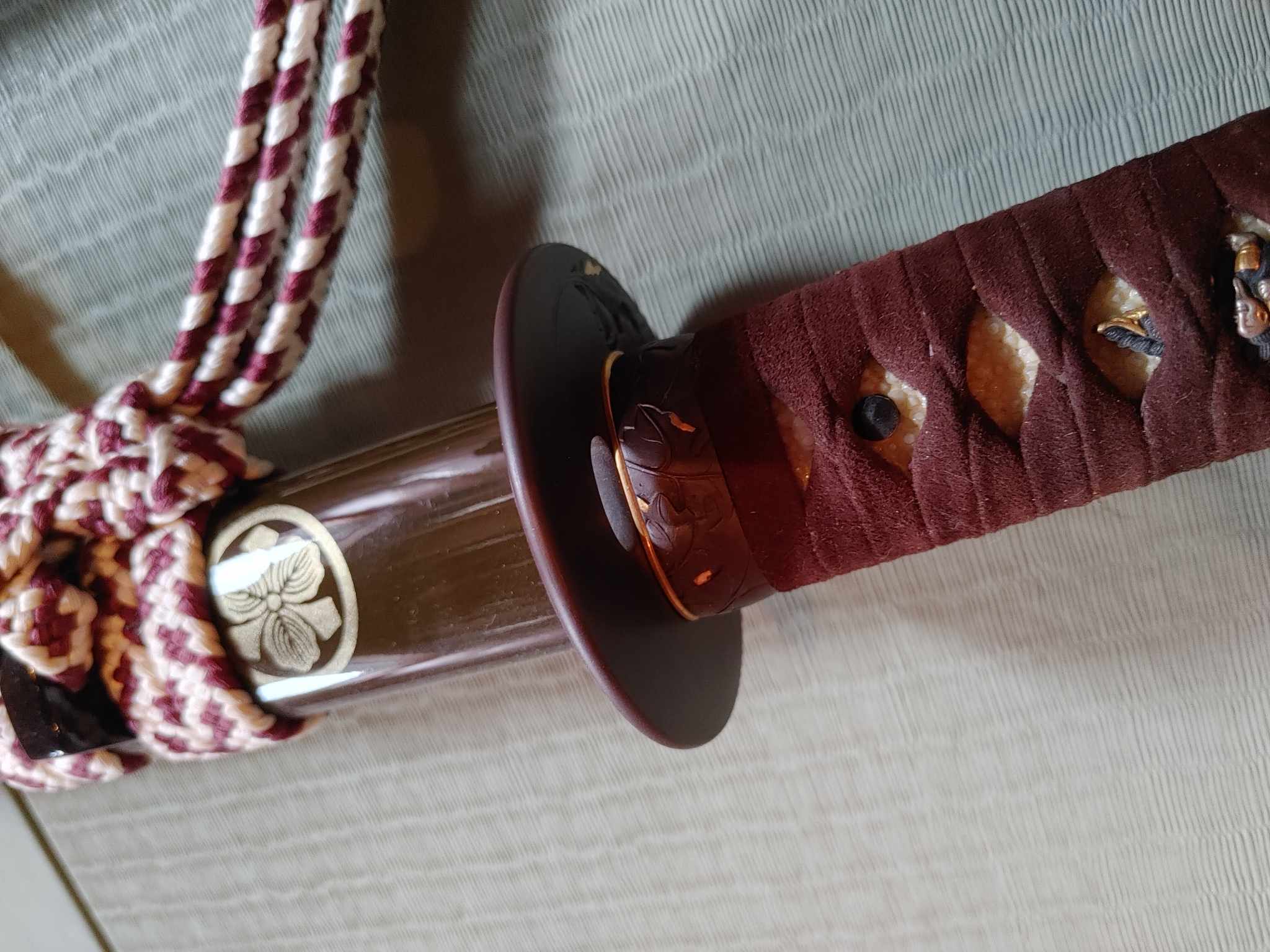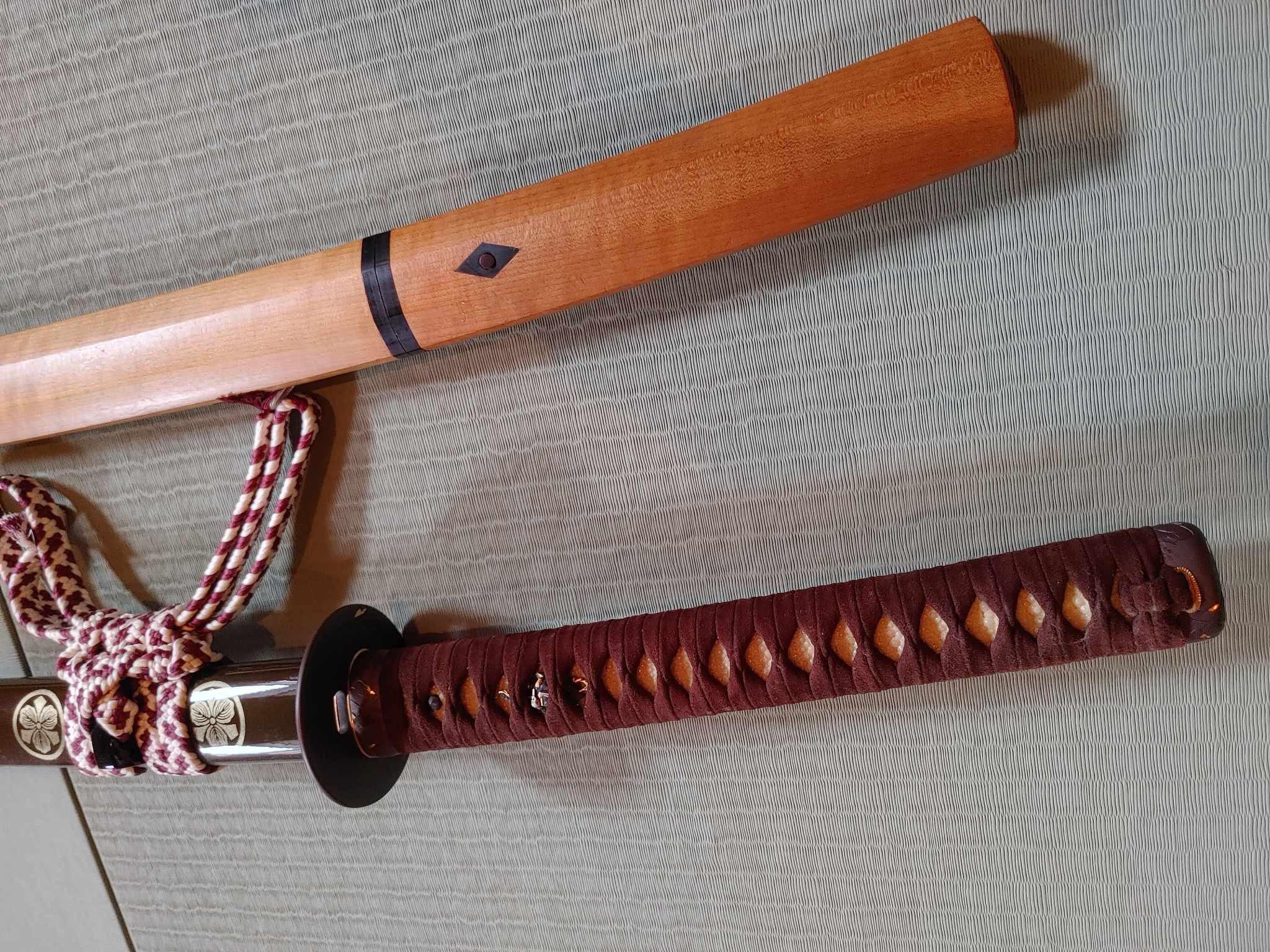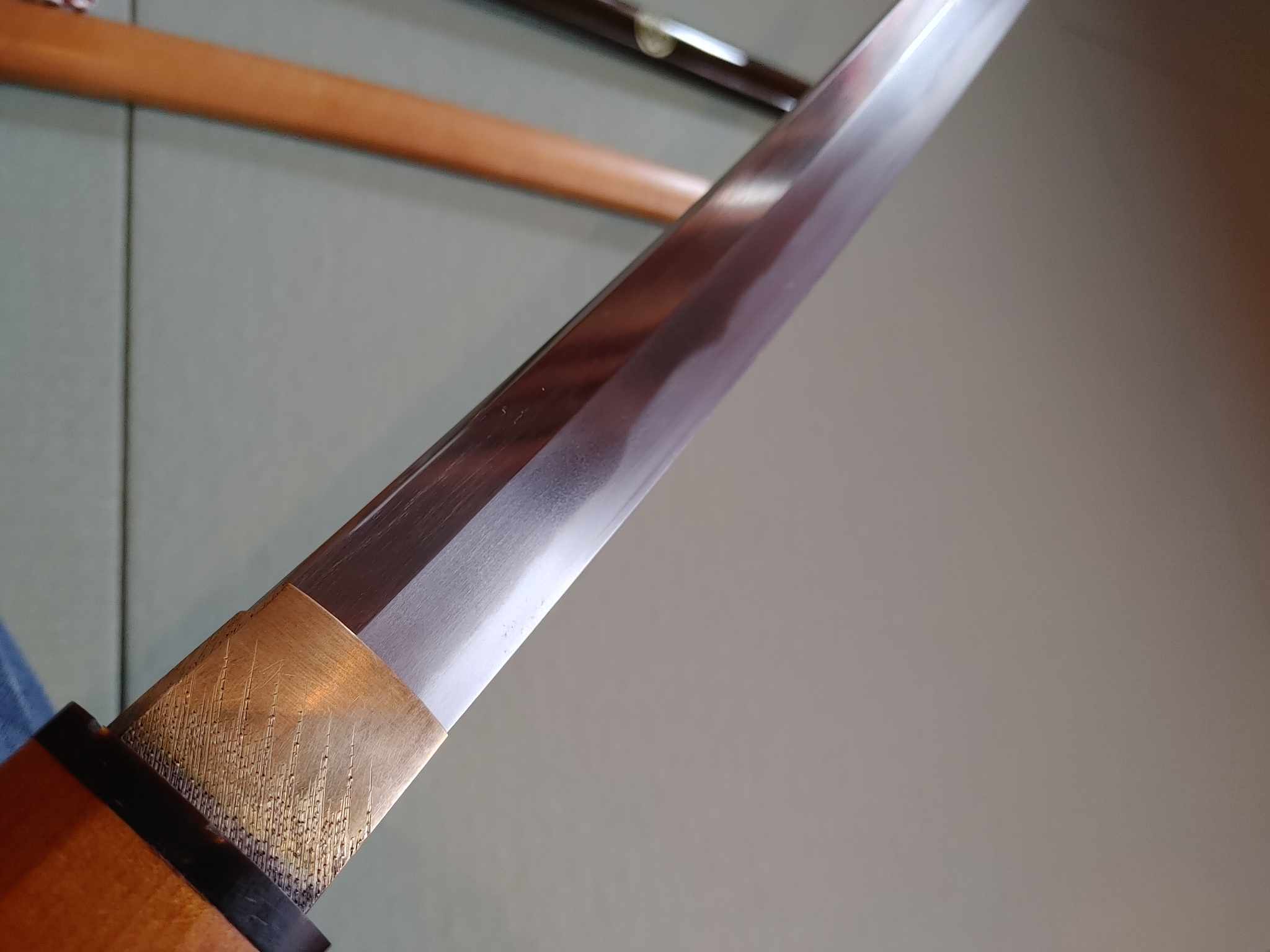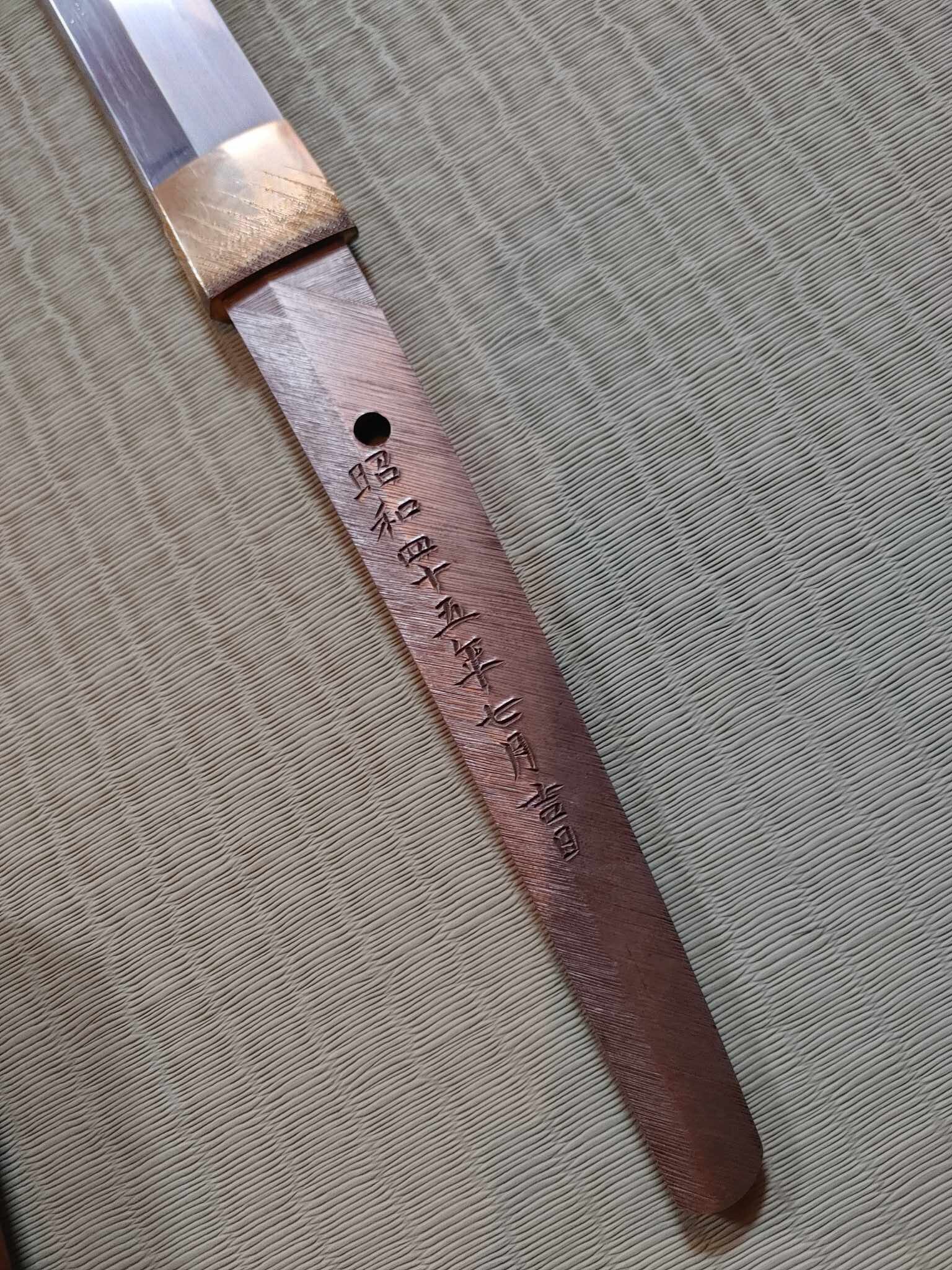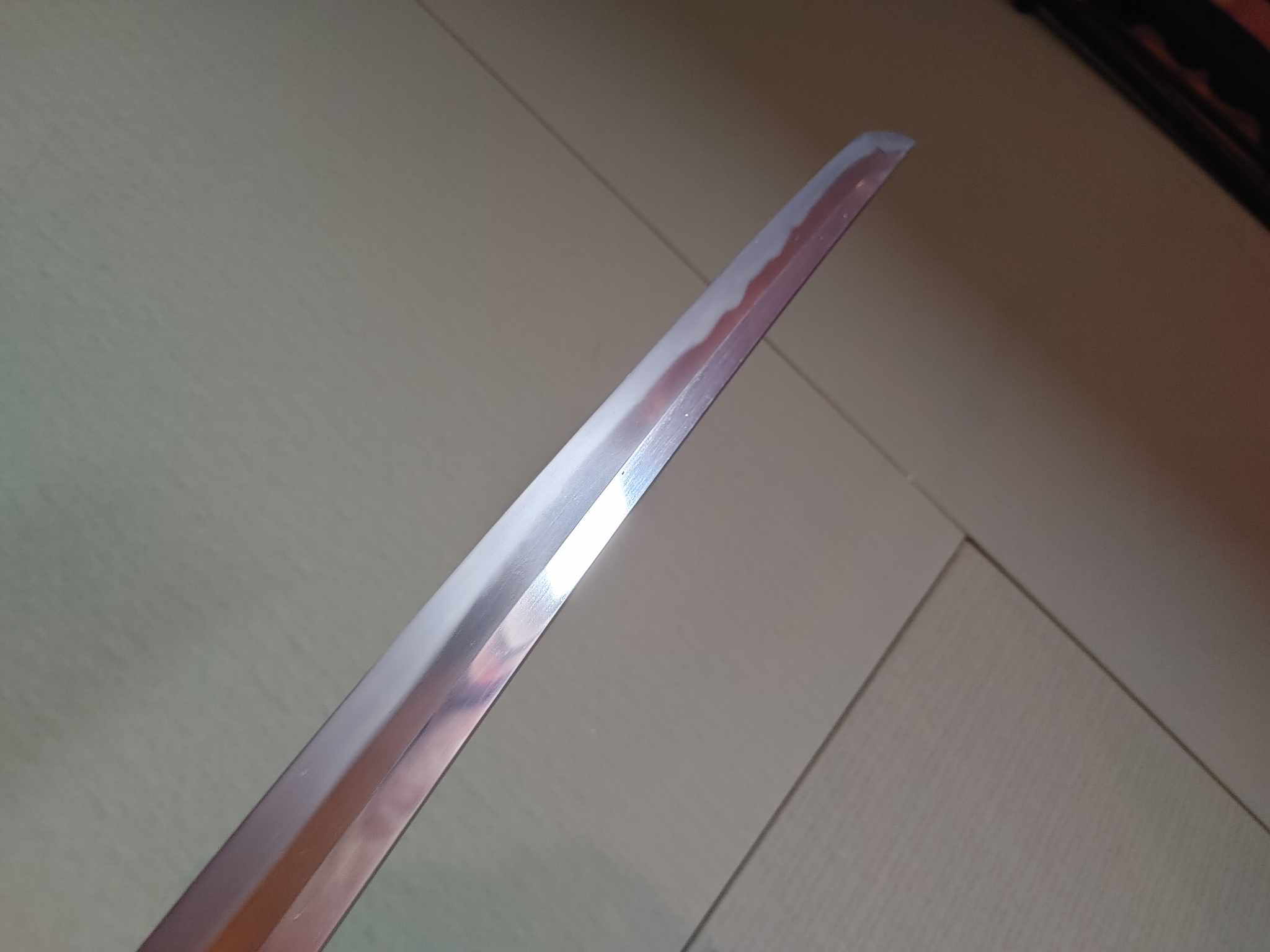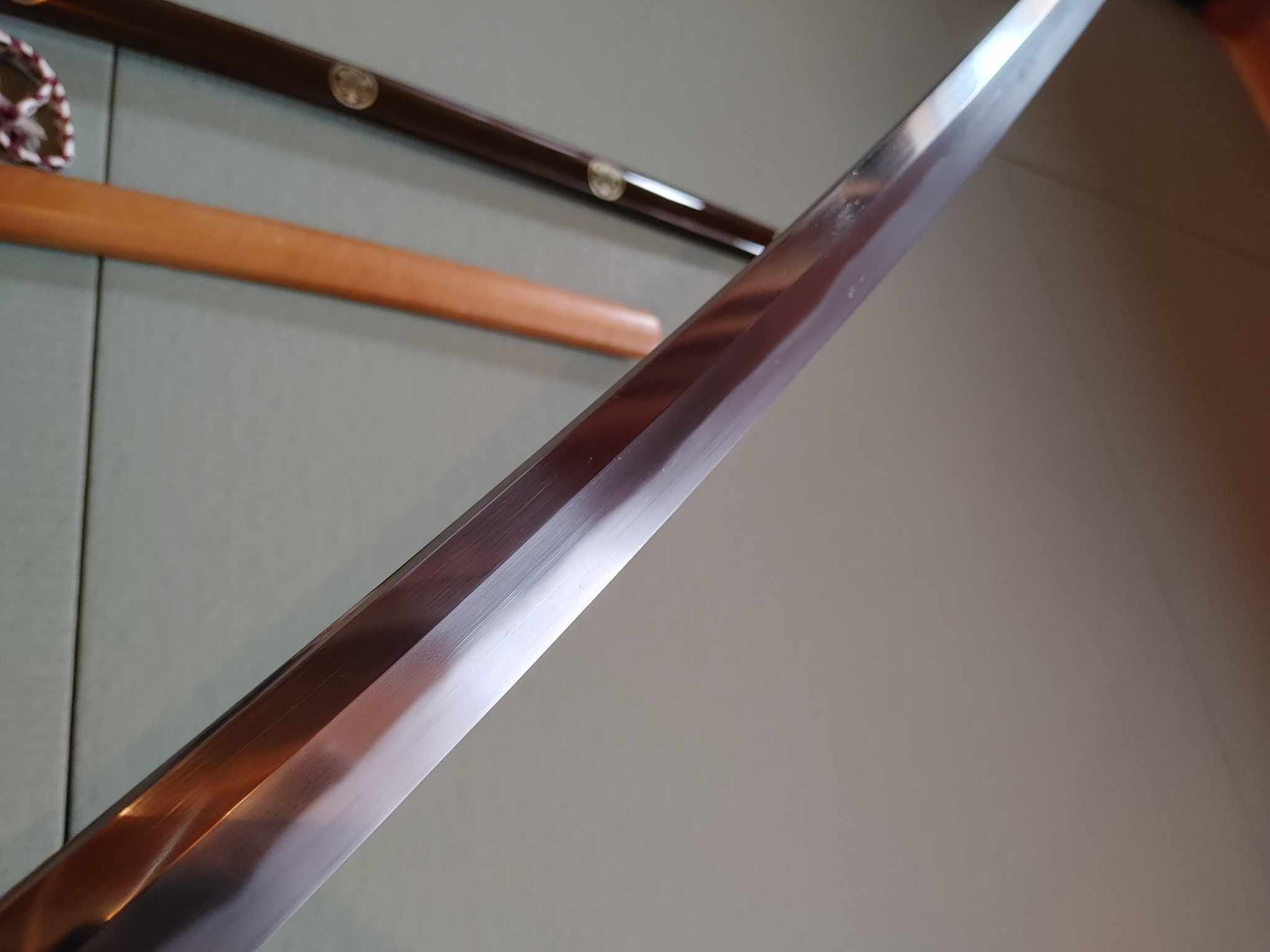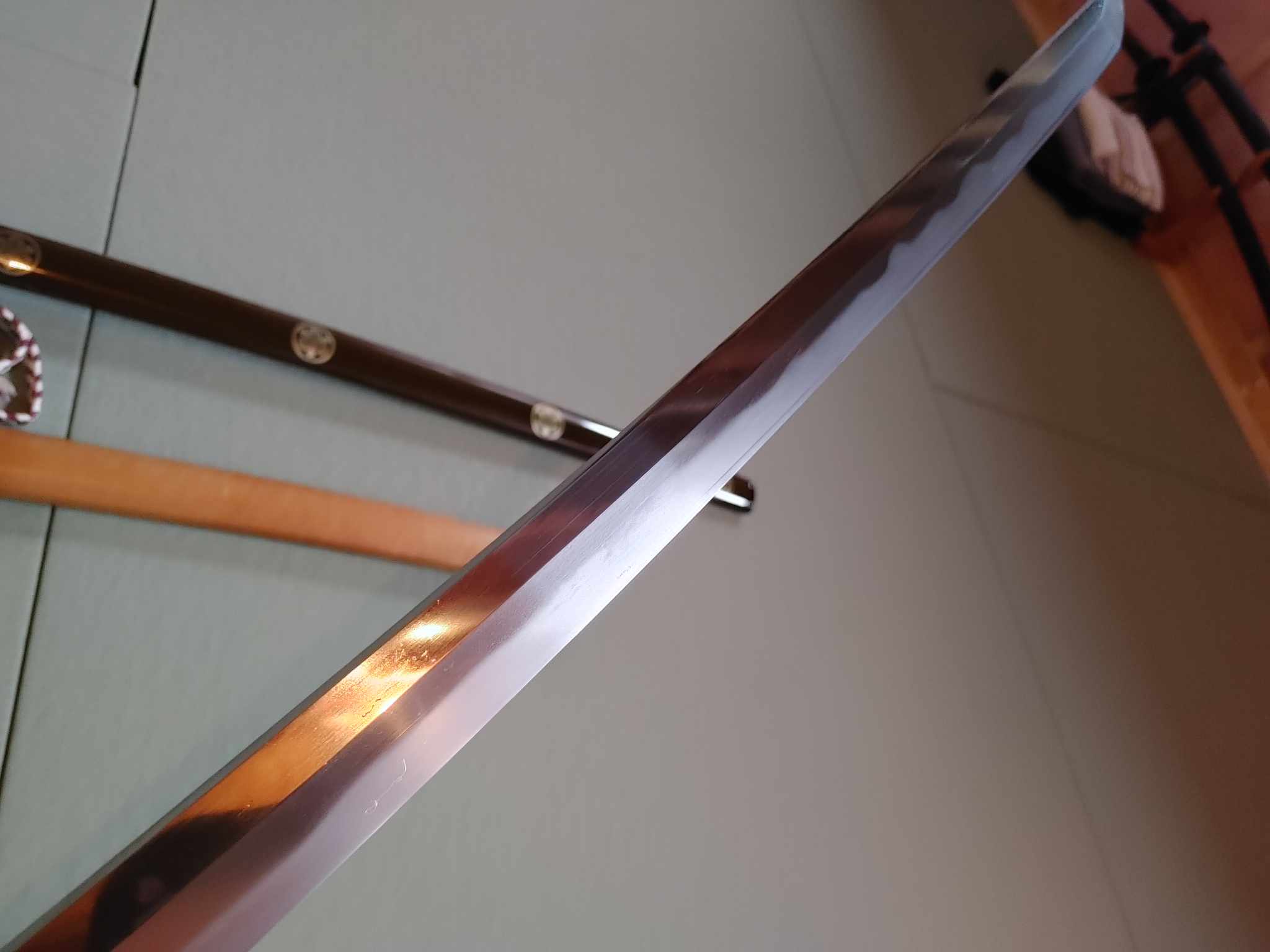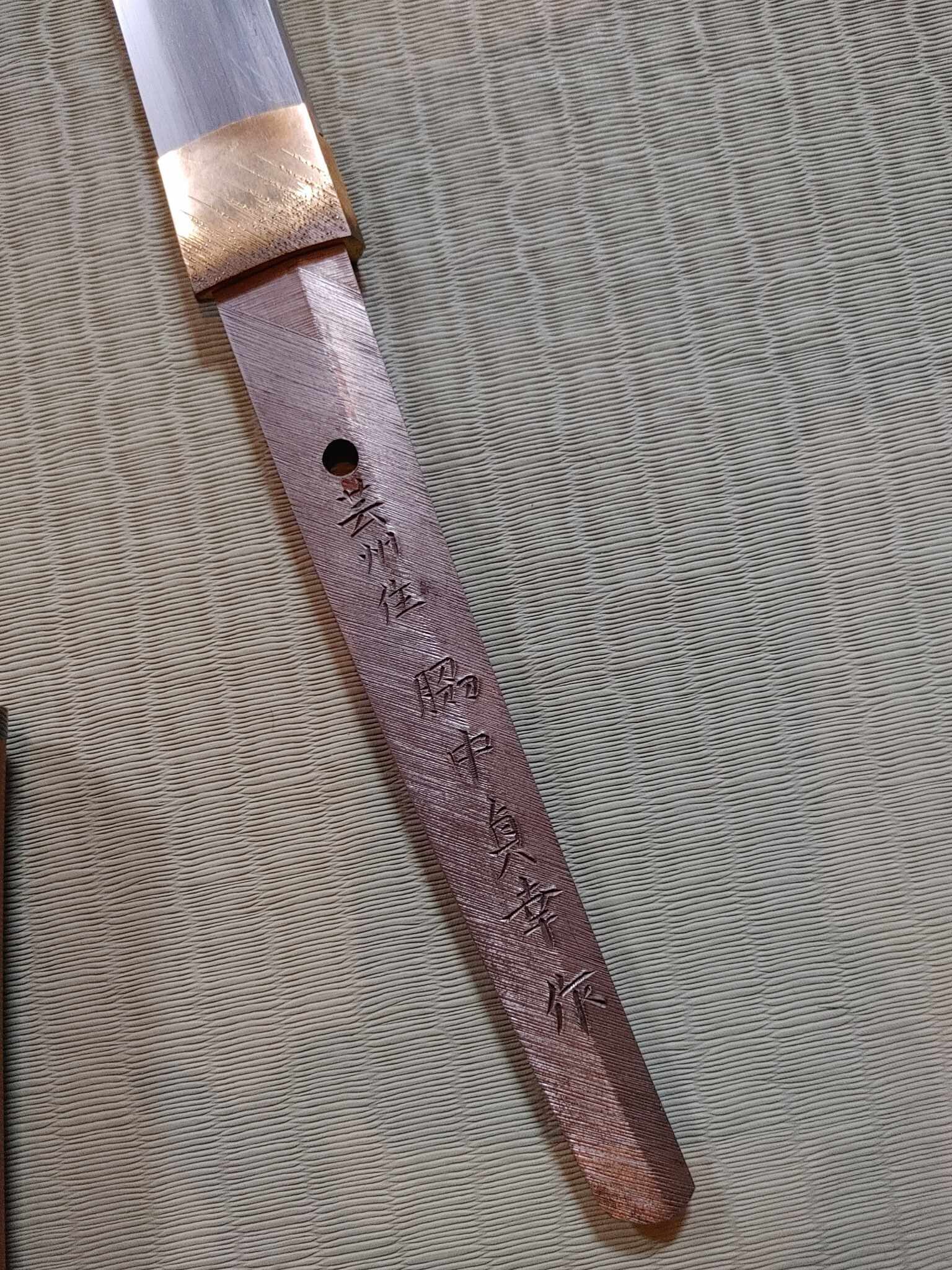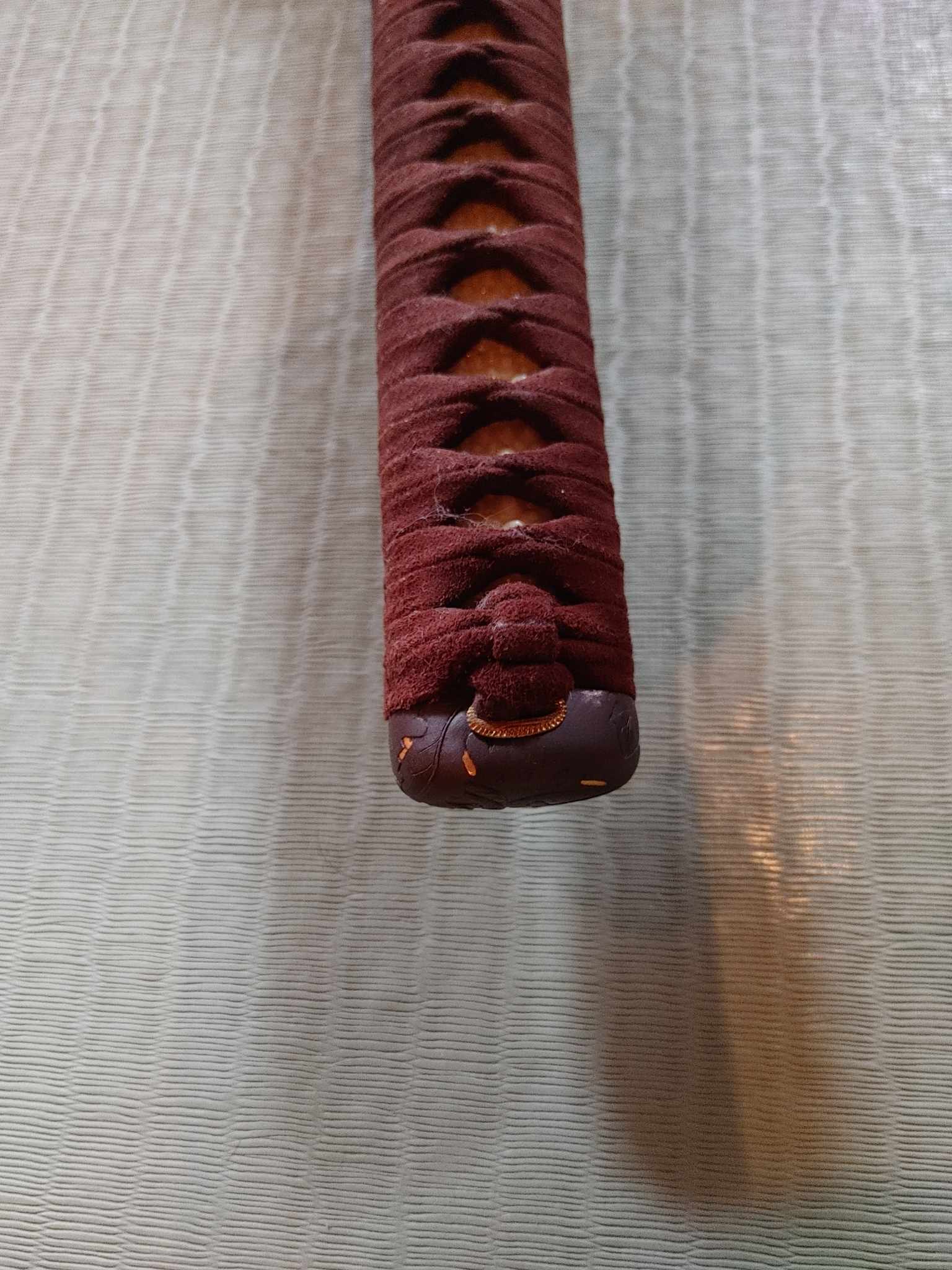Description
The Gassan school of his origins remains to this day one of the most prestigious and successful lines of sword forging. The roots of Gassan extend far back into the Kamakura period (1185-1333 AD), and it is suspected perhaps even as early as Heian period (794-1185 AD). The home of Gassan was in Dewa province in the northern region of Honshu where they were the only indigenous school to Dewa. The name “Gassan” actually refers to one of three sacred mountains of Dewa, or “Dewa Sanzan”, the other two being Mt. Haguro and Mt. Yudono. It is a very mountainous and remote region, and was even more so in the earliest days of the school.
From the very earliest works of the Gassan school, they exhibit a type of hada called “Ayasugi” which is comprised of long evenly undulating stacked wave pattern. Interestingly enough this pattern of the same name is carved in the interior walls of the body of the Shamisen (a guitar like musical instrument) to improve the tone. This pattern eventually became the hallmark of Gassan works and is often referred to as “Gassan Hada” as it continued to be refined and perfected by the Gassan smiths up until the current Gassan head and Living National Treasure smith, Gassan Sadatoshi.
The Gassan school faded from view around the beginning of the 17th century, and then was revived with Gassan Sadayoshi who was born in 1780. Sadayoshi traveled from Dewa to the forge of Suishinshi Masahide, who was striving to rediscover the techniques of Koto masters. Masahide was a proliferate teacher, and is said to have had over 200 students. Sadayoshi became one such student and later settled in Osaka to open his own forge. The line was re-established with him and his adopted son, Gassan Sadakazu became the heir to the line entering very difficult times for swordsmiths; the Meiji Restoration. The Samurai class was effectively abolished and swords were no longer a weapon that could either be worn, nor were they in much demand as Japan Westernized, so swordsmiths were relegated to finding work in other trades. Many turned to tool making, blacksmithing, or other related trades. However Gassan Sadakazu contined on with sword making and found a market making copies of famous swords for influential and affluent clientele, as he was quite gifted in making swords in the Bizen, Soshu, and Yamato traditions. He became a Teishitsu Gigeiin or “Artist under the Imperial Household” and thus was called upon by the Imperial Family to make swords that would be worn, or bestowed as gifts by the Imperial Family. He survived the times and his son, Gassan Sadakatsu, would become the luminary smith of the 20th century, and also receive the dedicated patronage of the Imperial Family.
The ability to craft swords in various traditions was also passed to Sadakatsu and he excelled in all of them, while also working in the iconic Gassan style in ayasugi hada. He continued the forging in Osaka and taught many students in his own time before passing away in 1943. Sadakatsu’s son (Gassan Sadaichi), grandson (Gassan Sadatoshi), and student (Takahashi Sadatsugu) all assumed the title of Living National Treasure in their own times attesting the skill and dedication this line holds in the craft of sword forging.
From all this, it becomes clear that Wakinaka Sadayuki had some of the best, and most demanding training in the craft. His own receipt of a title of Prefectural Treasure in Hiroshima demonstrates his own journey to achieve juncture of quality and beauty.
This robust blade by Sadayuki is one inspired by Horikawa Kunihiro . The ko-itame/mokume hada carries a bright midare/gunome hamon high into the ji with areas of konie, sunagashi, yo, and kinsuji. The boshi is nearly ichimai, turning back deeply in the kissaki. There is strong masame in the shinogiji, accompanied by areas of muneyaki. The nakago is finished with great care in the firmest tradition of Gassan training with absolute attention to the yasurime and signature. This style of bold and highly accurate yasurime and carefully executed signature is yet another Gassan trait. It has a gilded copper single piece habaki with yujo pattern. It rests in a nice dark honoki shirasaya with horn accents.
The koshirae for this sword was constructed in 2014, through the services of Keith Larman of Summerchild Polishing. The fuchi, kashira, and tsuba were made by Patrick Hastings of Tagane Arts and are comprised of hand sculpted russet iron patinated with gold accents, on. The leaves are skillfully carved in excellent detail. The menuki are antiques from about mid-Edo period and illustrate a man carrying bundles of wood. The tsuka is finished in dark brown doeskin material. The saya is finished in an olive toned brown with gold mons along the omote side. The seppa are gold plated copper with soft radius rims. The koshirae is held together with a nice tsunagi (mock wooden replica) of the blade making an excellent display together with the blade in it’s shirasaya.
Signed: Unshu Ju Wakinaka Sadayuki Saku (made by Sadayuki of Unshu (modern day Izumo/Shimane areas) province)
Dated: Showa Yon Ju Go Nen Shichi Gatsu Kichi Jitsu (Auspicious day in July, 1970)
Measurements are:
Nagasa: 74.3 cm (29 1/4″)
Motohaba: 3.25 cm
Kasane: 7 mm
Sakihaba: 2.3 cm
Sakikasane: 5 mm
Sori 1.35 cm
Weight of mounted blade in hand (without saya): 1,352 grams
This is an excellent sword for the practitioner or collector alike and is priced very well for the package.


